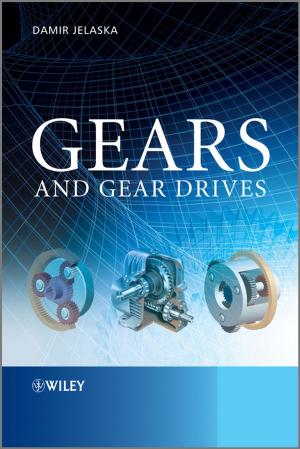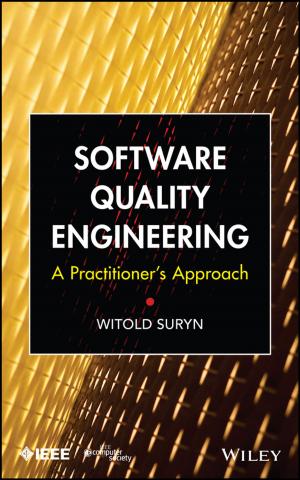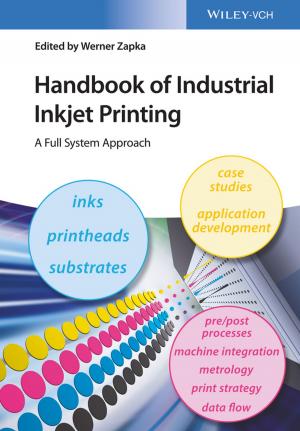Modern Aerodynamic Methods for Direct and Inverse Applications
Nonfiction, Science & Nature, Technology, Aeronautics & Astronautics| Author: | Wilson C. Chin | ISBN: | 9781119580867 |
| Publisher: | Wiley | Publication: | March 21, 2019 |
| Imprint: | Wiley-Scrivener | Language: | English |
| Author: | Wilson C. Chin |
| ISBN: | 9781119580867 |
| Publisher: | Wiley |
| Publication: | March 21, 2019 |
| Imprint: | Wiley-Scrivener |
| Language: | English |
Just when classic subject areas seem understood, the author, a Caltech, M.I.T. and Boeing trained aerodynamicist, raises profound questions over traditional formulations. Can shear flows be rigorously modeled using simpler “potential-like” methods versus Euler equation approaches? Why not solve aerodynamic inverse problems using rapid, direct or forward methods similar to those used to calculate pressures over specified airfoils? Can transonic supercritical flows be solved rigorously without type-differencing methods? How do oscillations affect transonic mean flows, which in turn influence oscillatory effects? Or how do hydrodynamic disturbances stabilize or destabilize mean shear flows? Is there an exact approach to calculating wave drag for modern supersonic aircraft?
This new book, by a prolific fluid-dynamicist and mathematician who has published more than twenty research monographs, represents not just another contribution to aerodynamics, but a book that raises serious questions about traditionally accepted approaches and formulations – and provides new methods that solve longstanding problems of importance to the industry. While both conventional and newer ideas are discussed, the presentations are readable and geared to advanced undergraduates with exposure to elementary differential equations and introductory aerodynamics principles. Readers are introduced to fundamental algorithms (with Fortran source code) for basic applications, such as subsonic lifting airfoils, transonic supercritical flows utilizing mixed differencing, models for inviscid shear flow aerodynamics, and so on – models they can extend to include newer effects developed in the second half of the book. Many of the newer methods have appeared over the years in various journals and are now presented with deeper perspective and integration.
This book helps readers approach the literature more critically. Rather than simply understanding an approach, for instance, the powerful “type differencing” behind transonic analysis, or the rationale behind “conservative” formulations, or the use of Euler equation methods for shear flow analysis when they are unnecessary, the author guides and motivates the user to ask why and why not and what if. And often, more powerful methods can be developed using no more than simple mathematical manipulations. For example, Cauchy-Riemann conditions, which are powerful tools in subsonic airfoil theory, can be readily extended to handle compressible flows with shocks, rotational flows, and even three-dimensional wing flowfields, in a variety of applications, to produce powerful formulations that address very difficult problems. This breakthrough volume is certainly a “must have” on every engineer’s bookshelf.
Just when classic subject areas seem understood, the author, a Caltech, M.I.T. and Boeing trained aerodynamicist, raises profound questions over traditional formulations. Can shear flows be rigorously modeled using simpler “potential-like” methods versus Euler equation approaches? Why not solve aerodynamic inverse problems using rapid, direct or forward methods similar to those used to calculate pressures over specified airfoils? Can transonic supercritical flows be solved rigorously without type-differencing methods? How do oscillations affect transonic mean flows, which in turn influence oscillatory effects? Or how do hydrodynamic disturbances stabilize or destabilize mean shear flows? Is there an exact approach to calculating wave drag for modern supersonic aircraft?
This new book, by a prolific fluid-dynamicist and mathematician who has published more than twenty research monographs, represents not just another contribution to aerodynamics, but a book that raises serious questions about traditionally accepted approaches and formulations – and provides new methods that solve longstanding problems of importance to the industry. While both conventional and newer ideas are discussed, the presentations are readable and geared to advanced undergraduates with exposure to elementary differential equations and introductory aerodynamics principles. Readers are introduced to fundamental algorithms (with Fortran source code) for basic applications, such as subsonic lifting airfoils, transonic supercritical flows utilizing mixed differencing, models for inviscid shear flow aerodynamics, and so on – models they can extend to include newer effects developed in the second half of the book. Many of the newer methods have appeared over the years in various journals and are now presented with deeper perspective and integration.
This book helps readers approach the literature more critically. Rather than simply understanding an approach, for instance, the powerful “type differencing” behind transonic analysis, or the rationale behind “conservative” formulations, or the use of Euler equation methods for shear flow analysis when they are unnecessary, the author guides and motivates the user to ask why and why not and what if. And often, more powerful methods can be developed using no more than simple mathematical manipulations. For example, Cauchy-Riemann conditions, which are powerful tools in subsonic airfoil theory, can be readily extended to handle compressible flows with shocks, rotational flows, and even three-dimensional wing flowfields, in a variety of applications, to produce powerful formulations that address very difficult problems. This breakthrough volume is certainly a “must have” on every engineer’s bookshelf.















